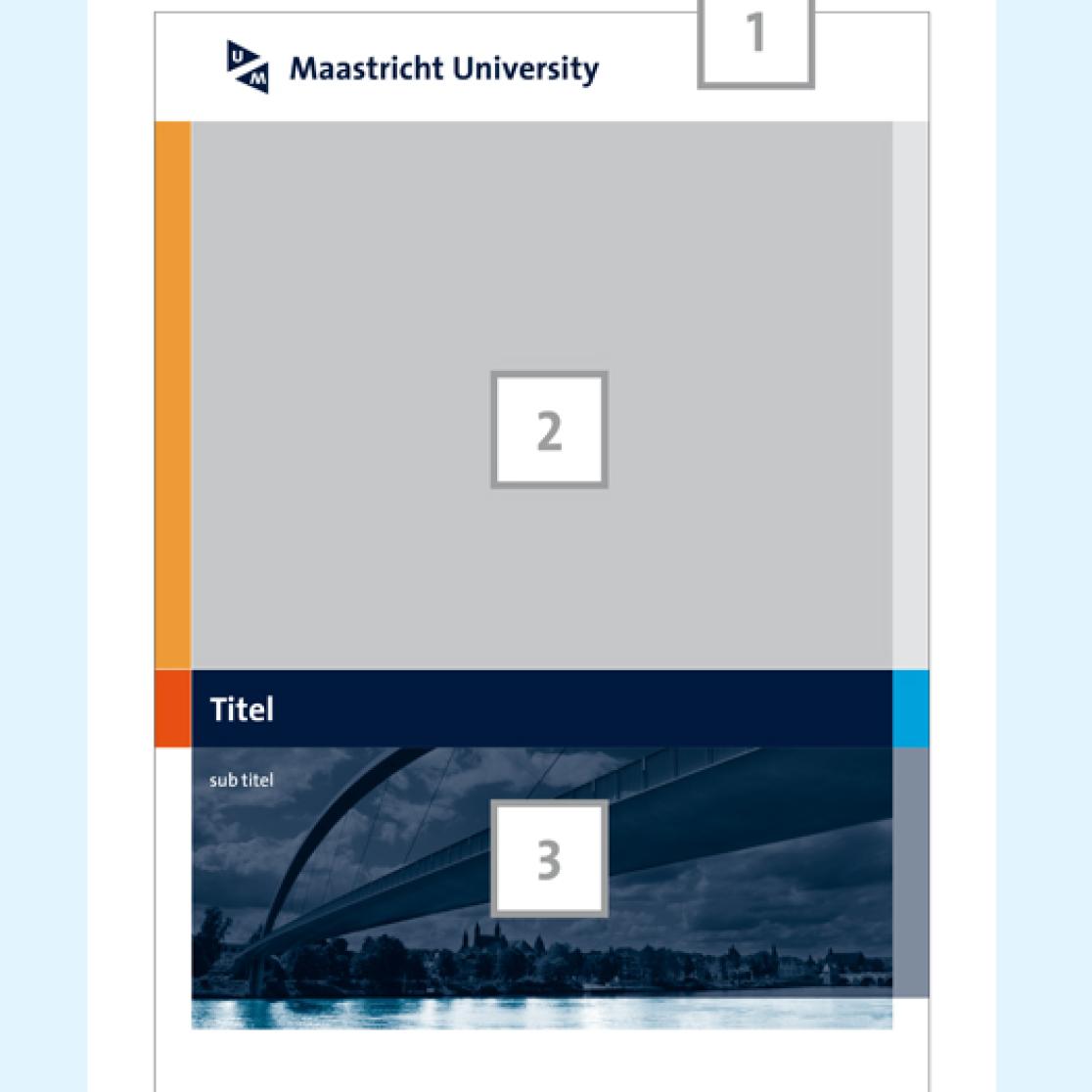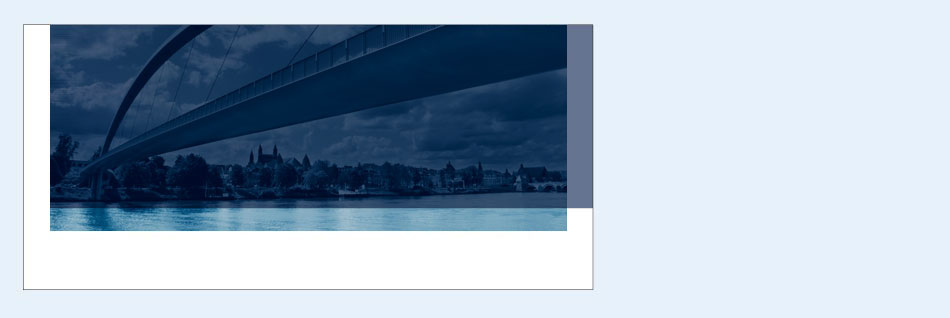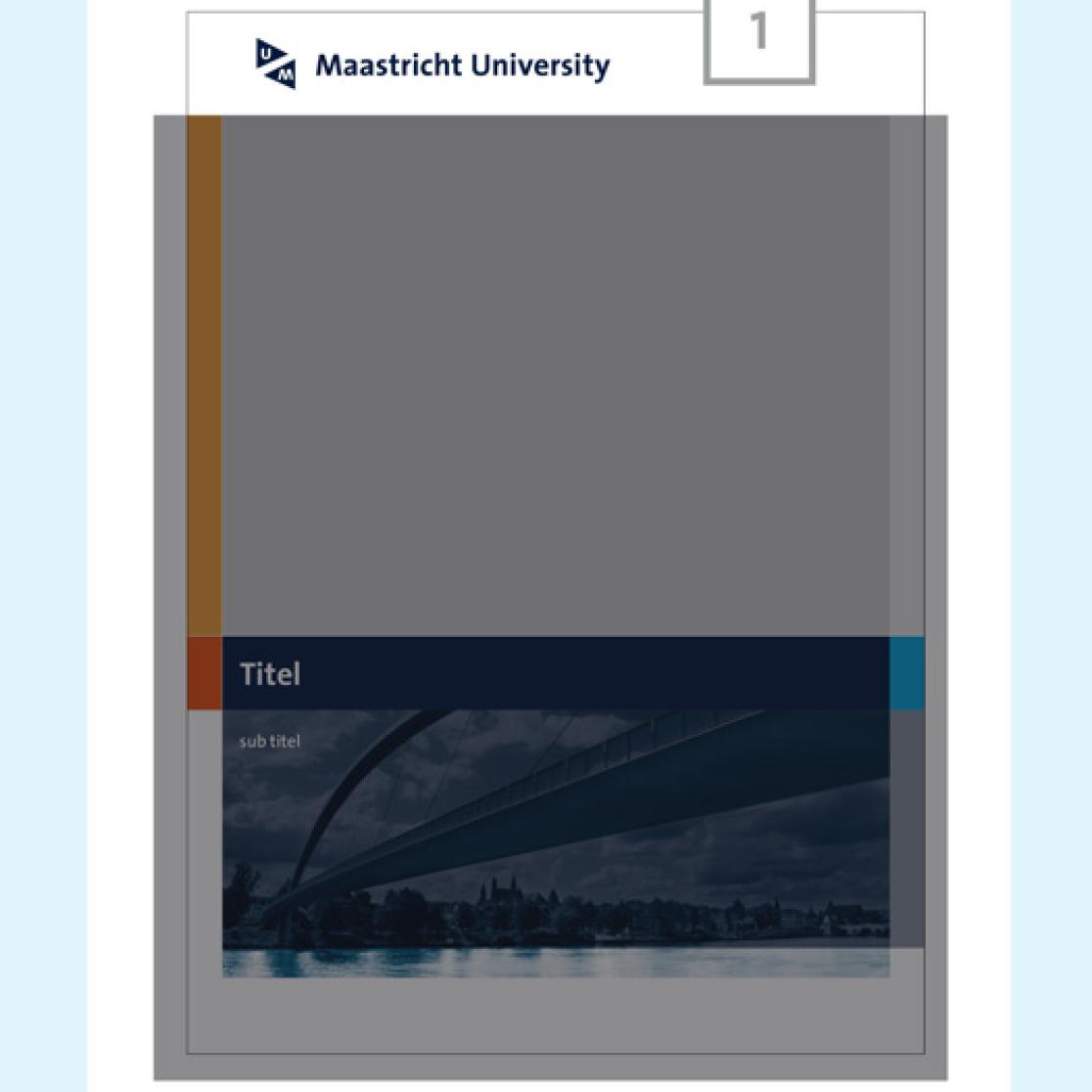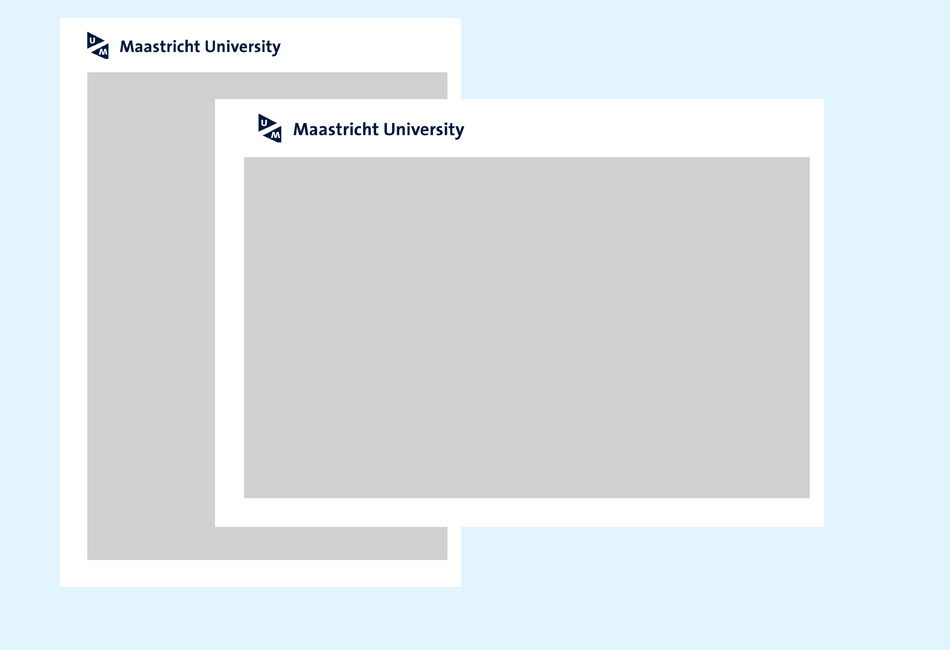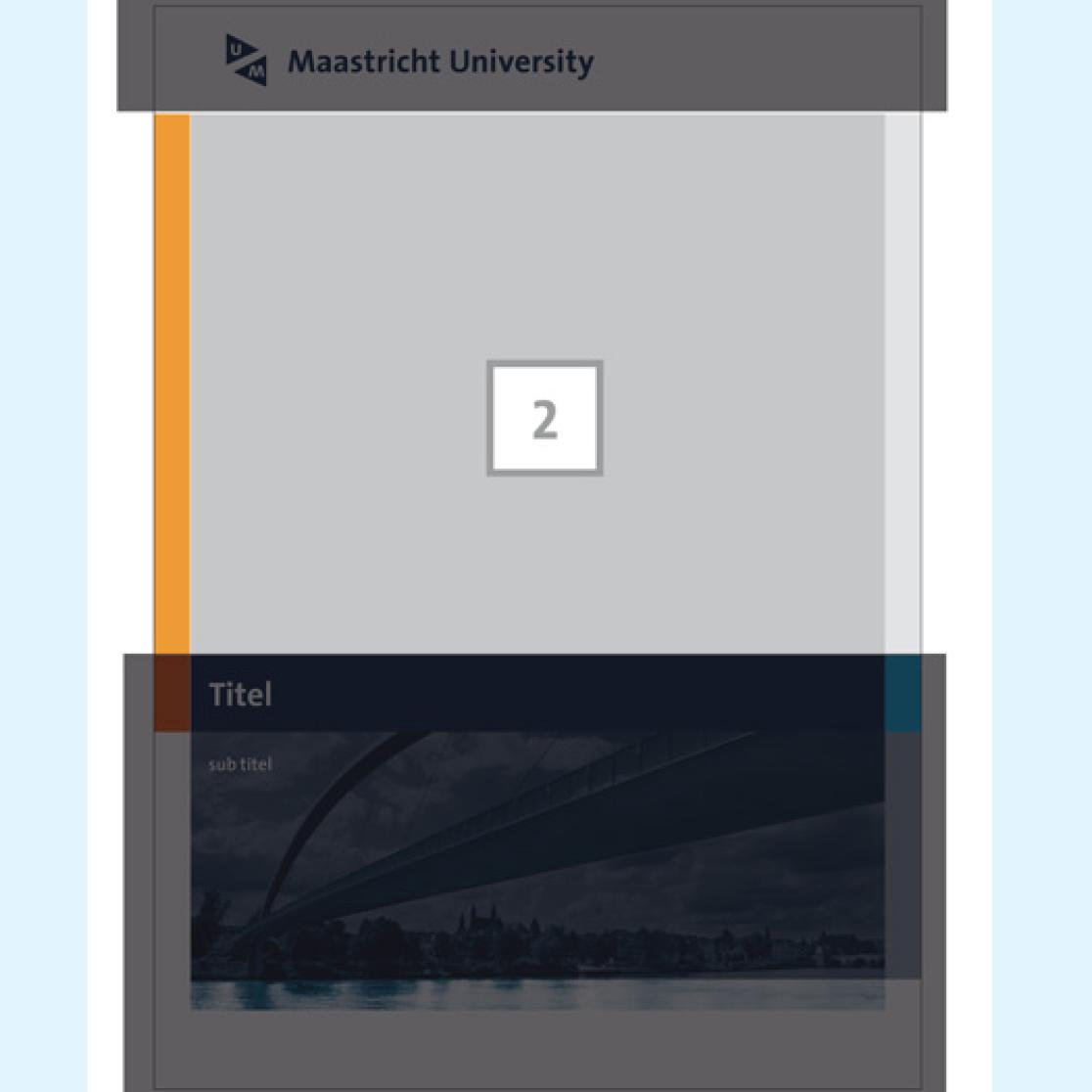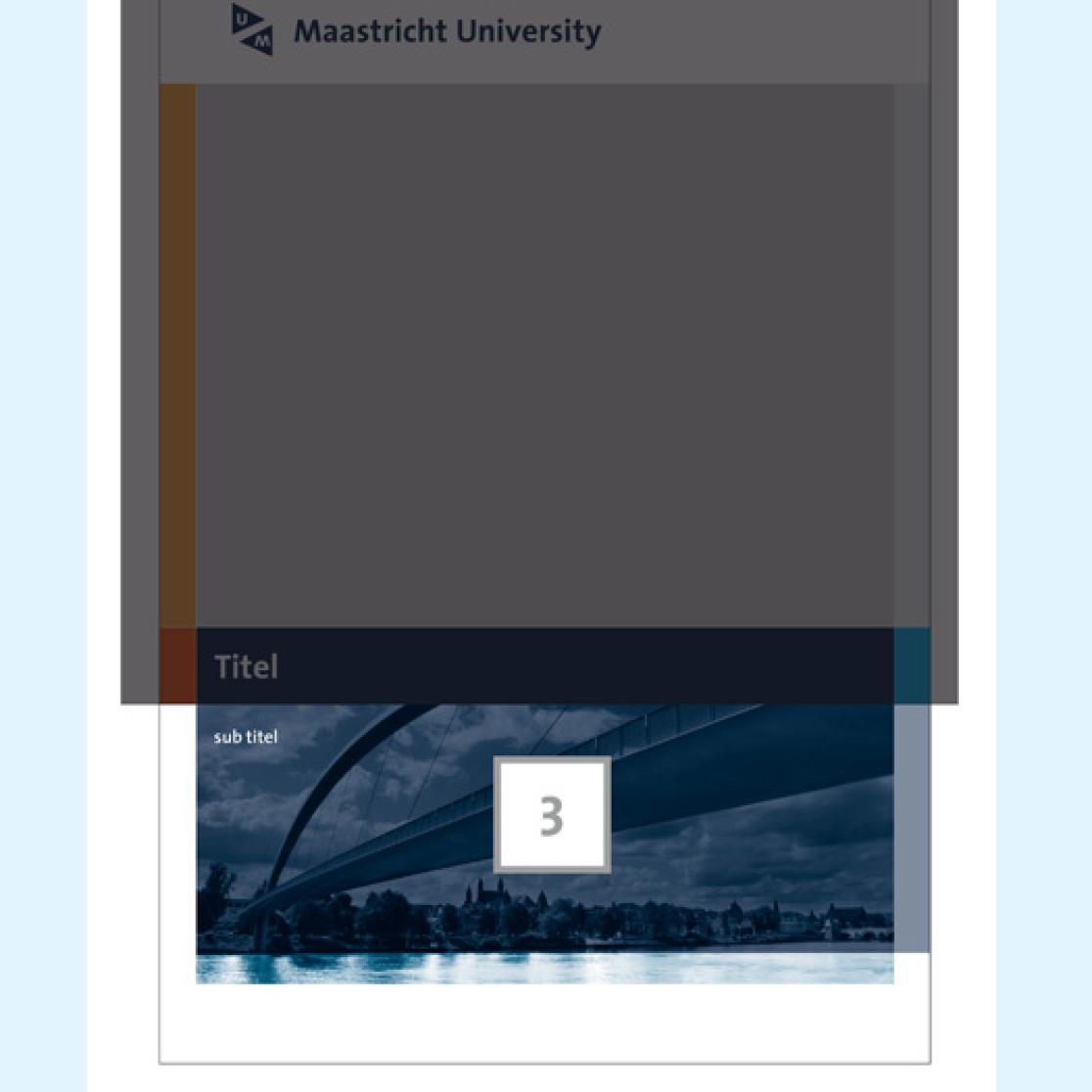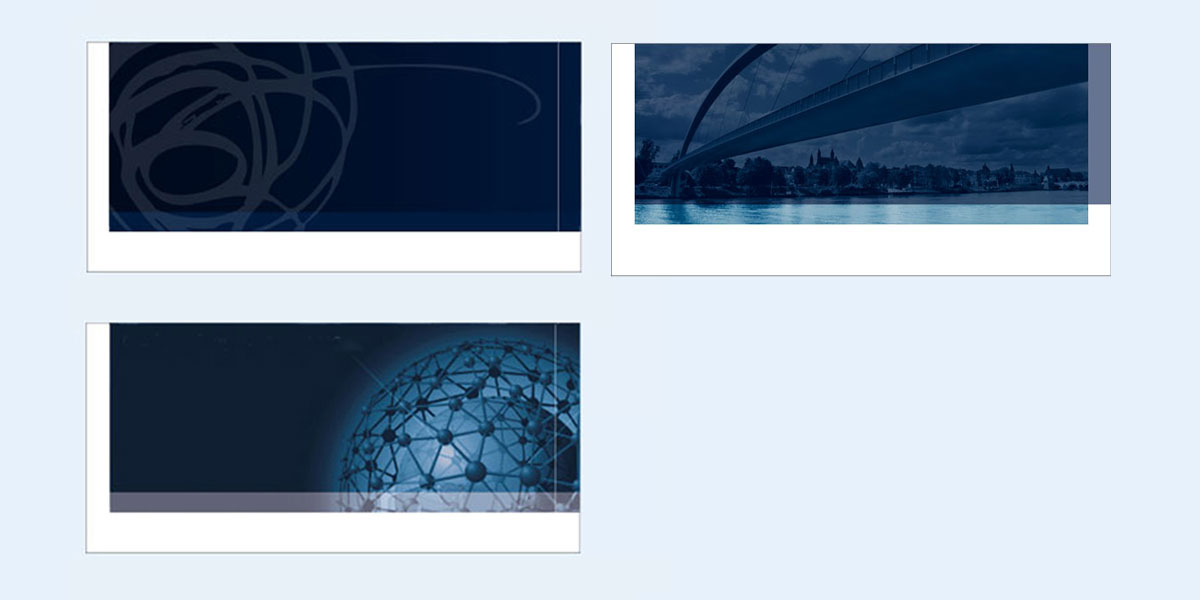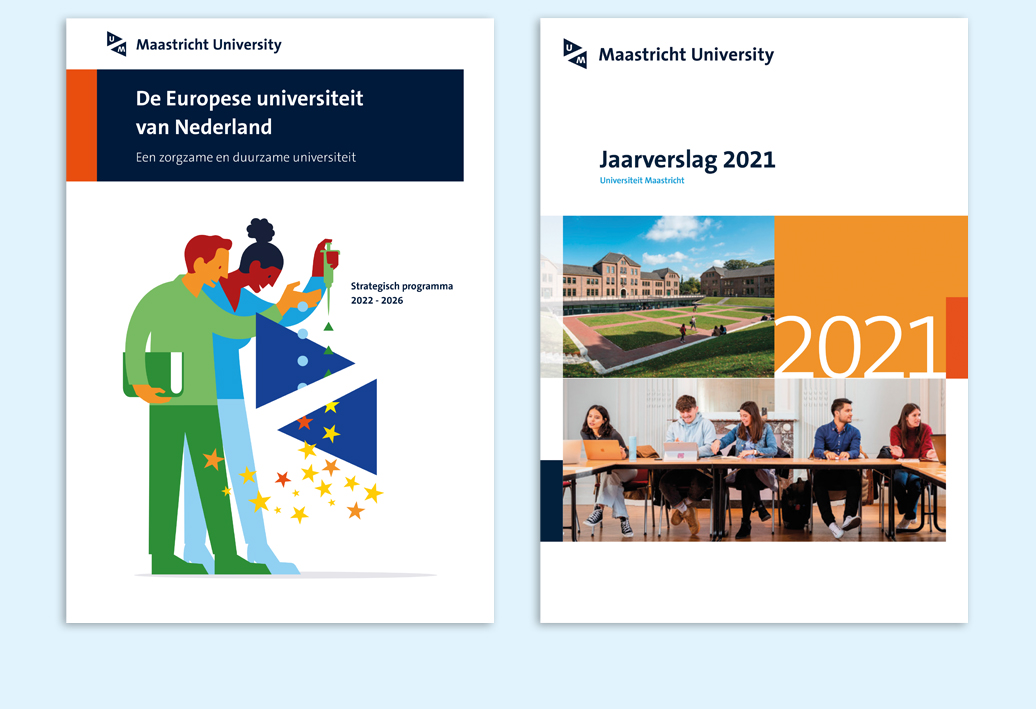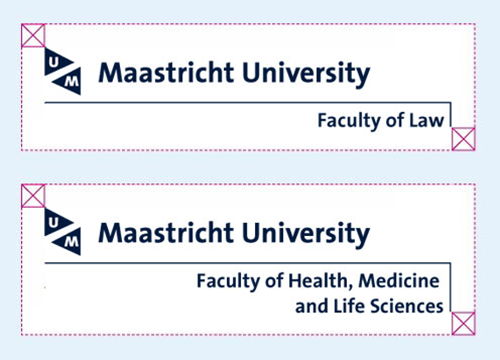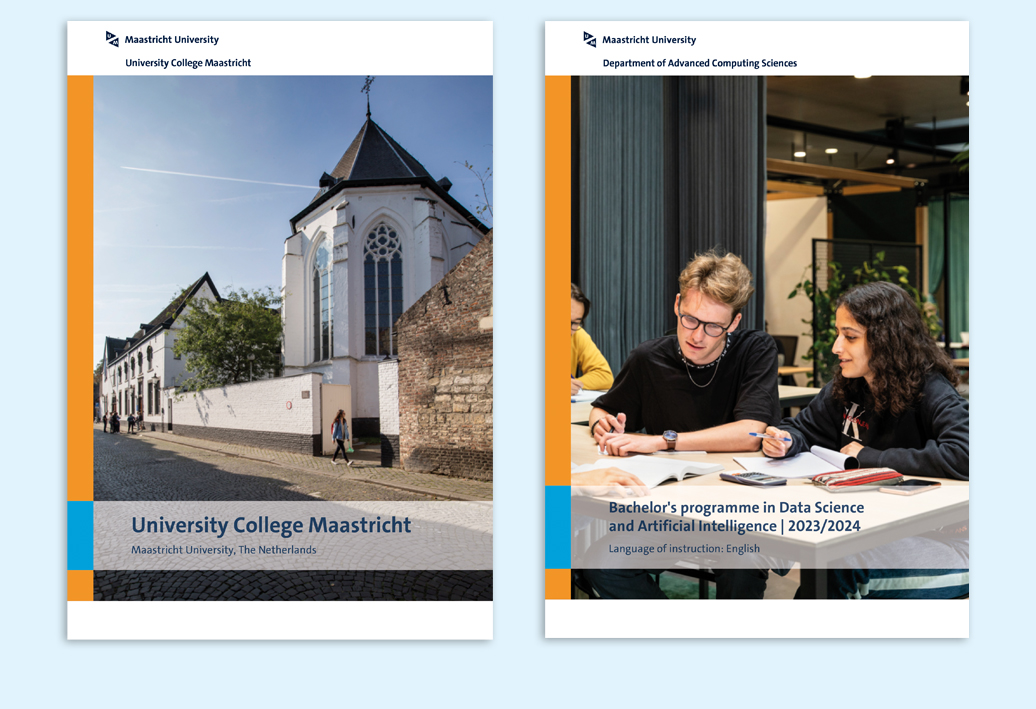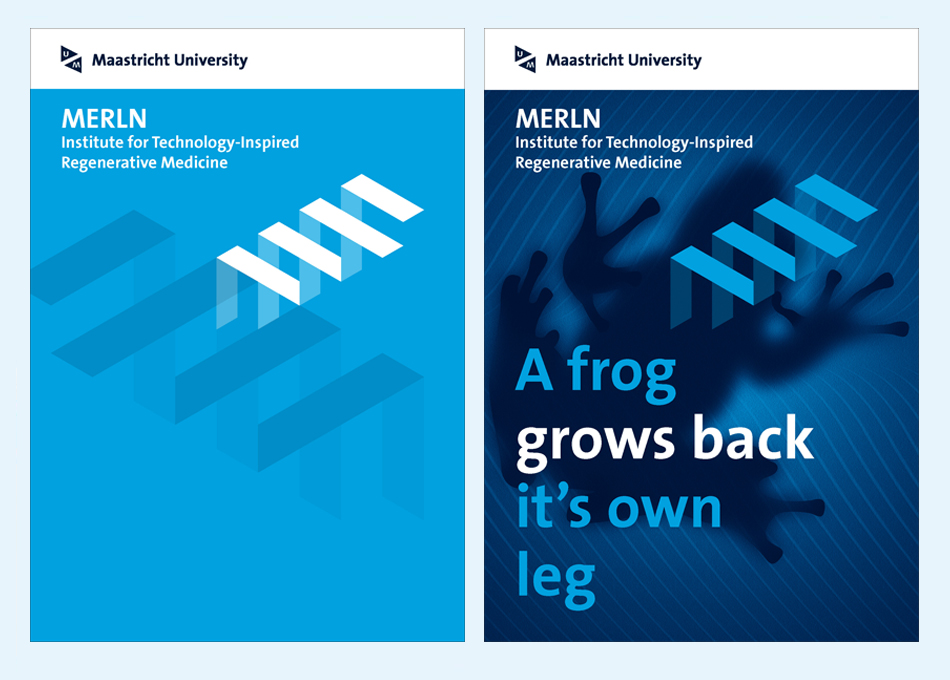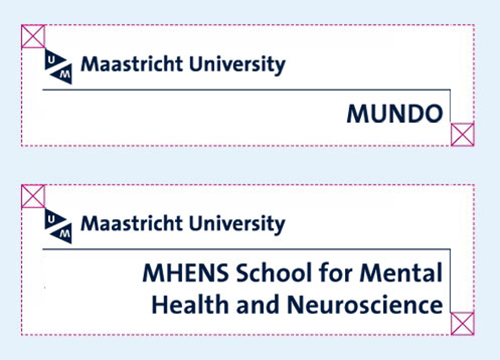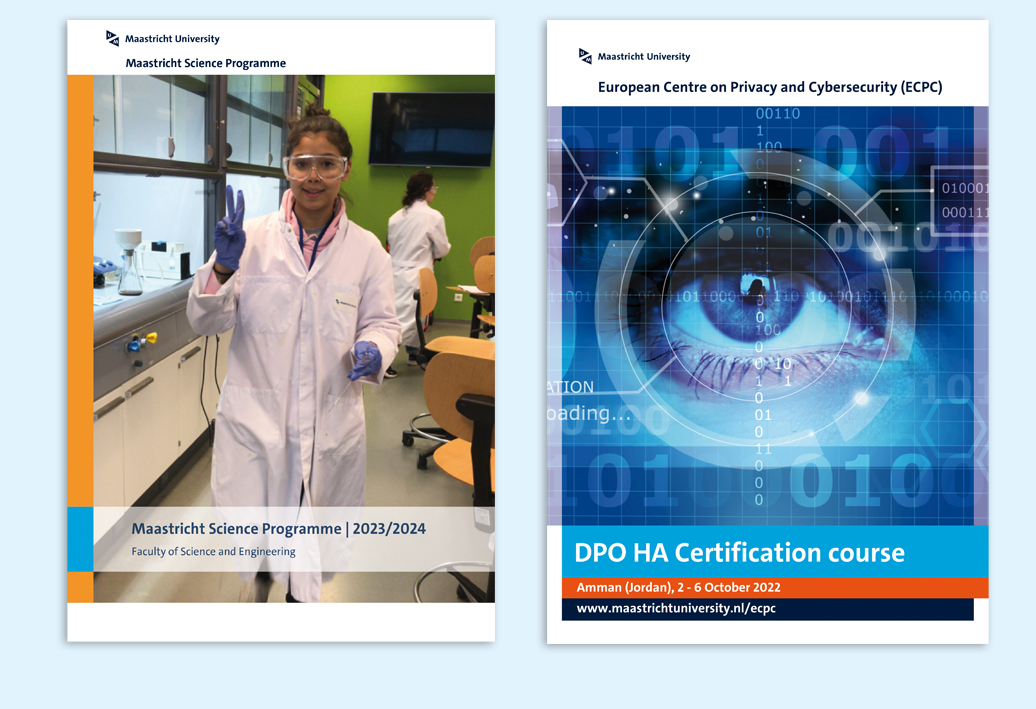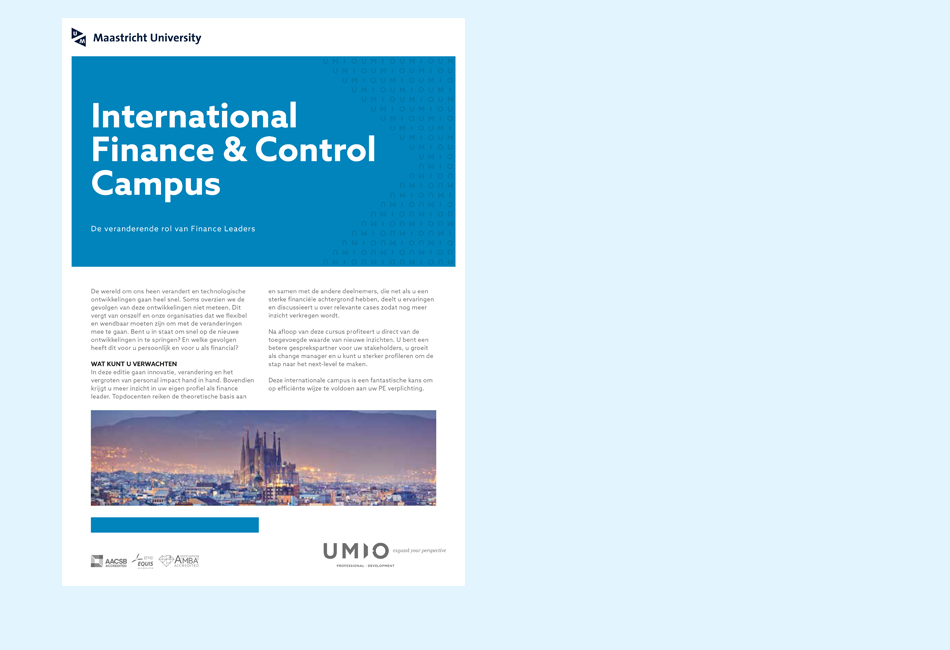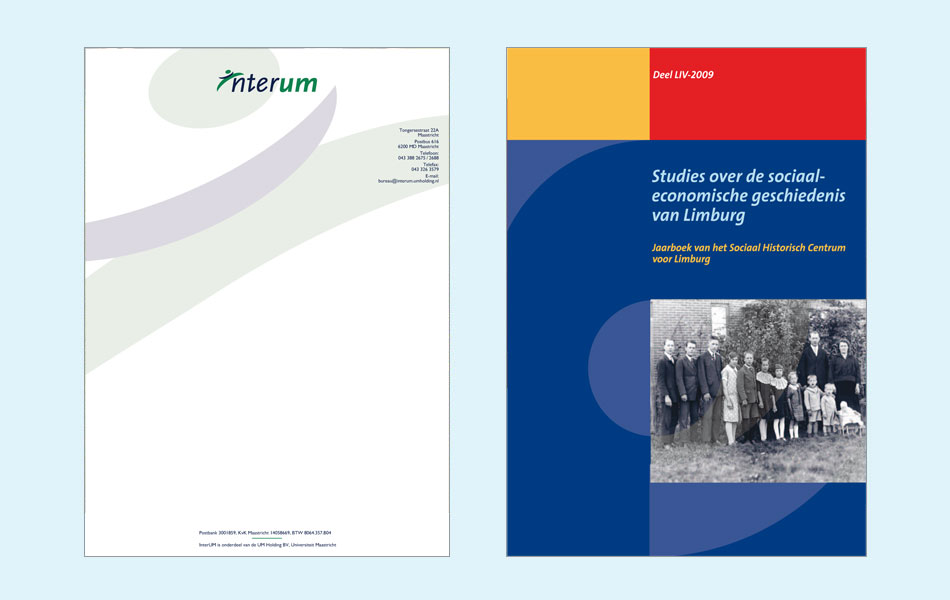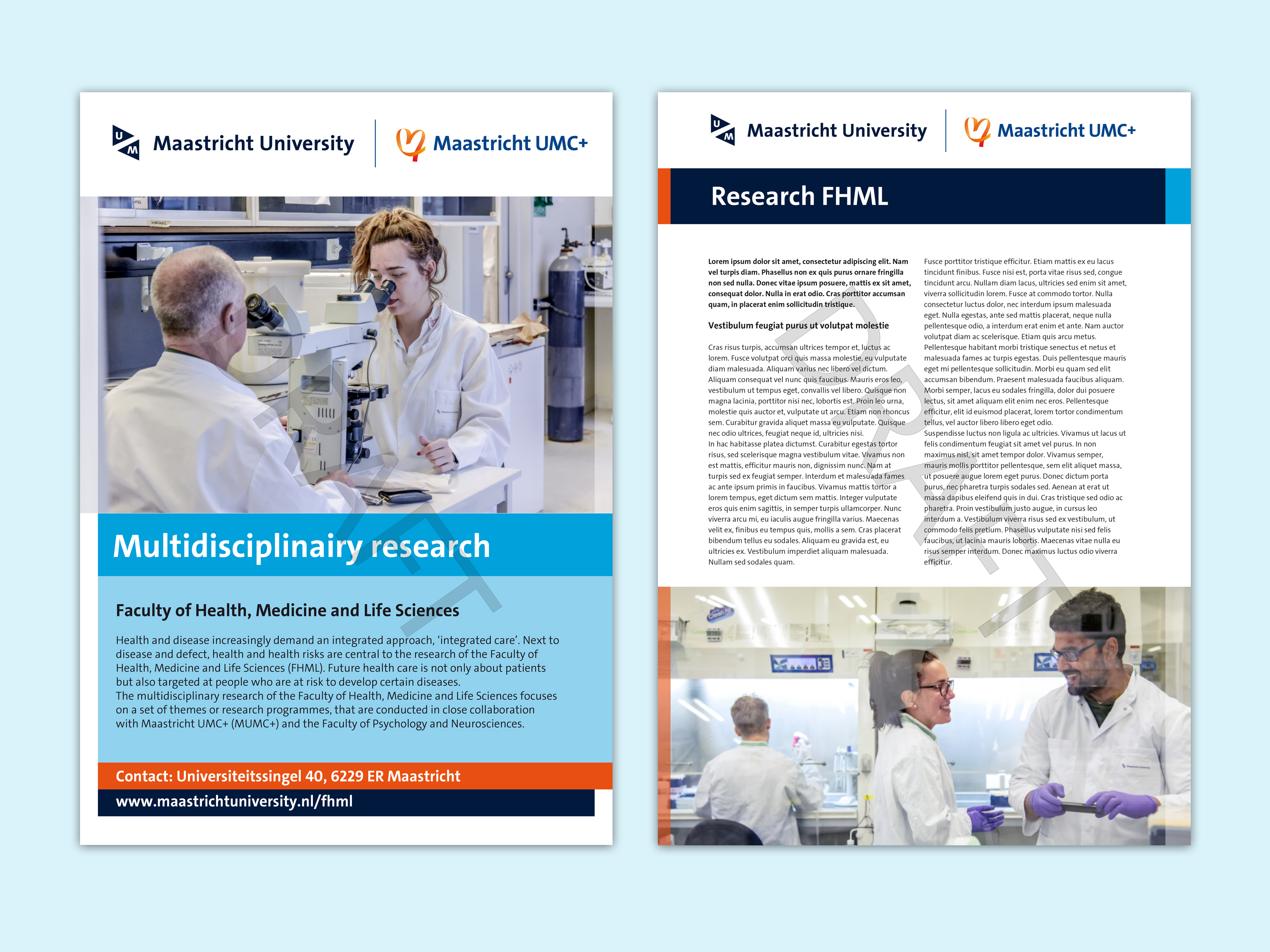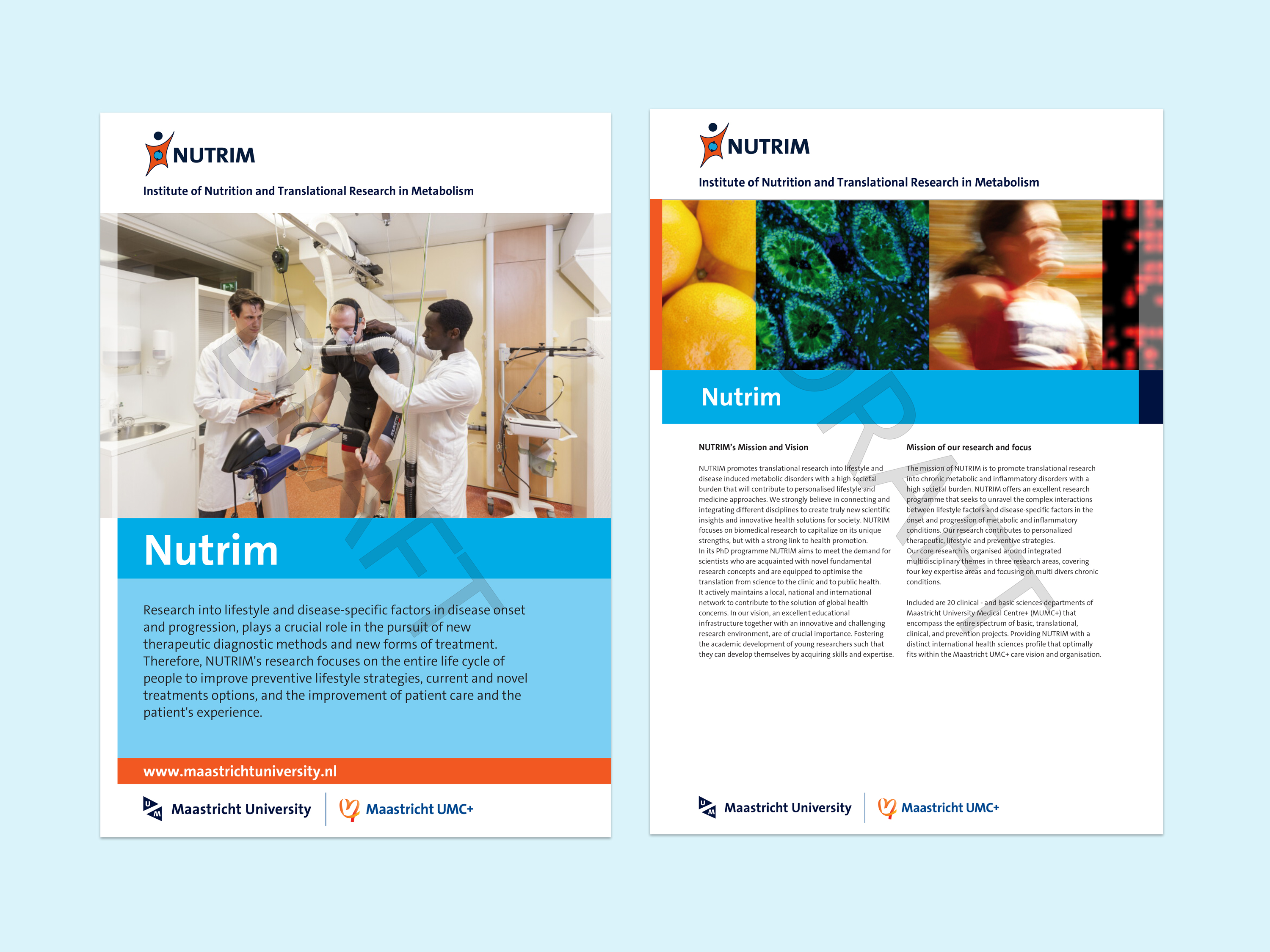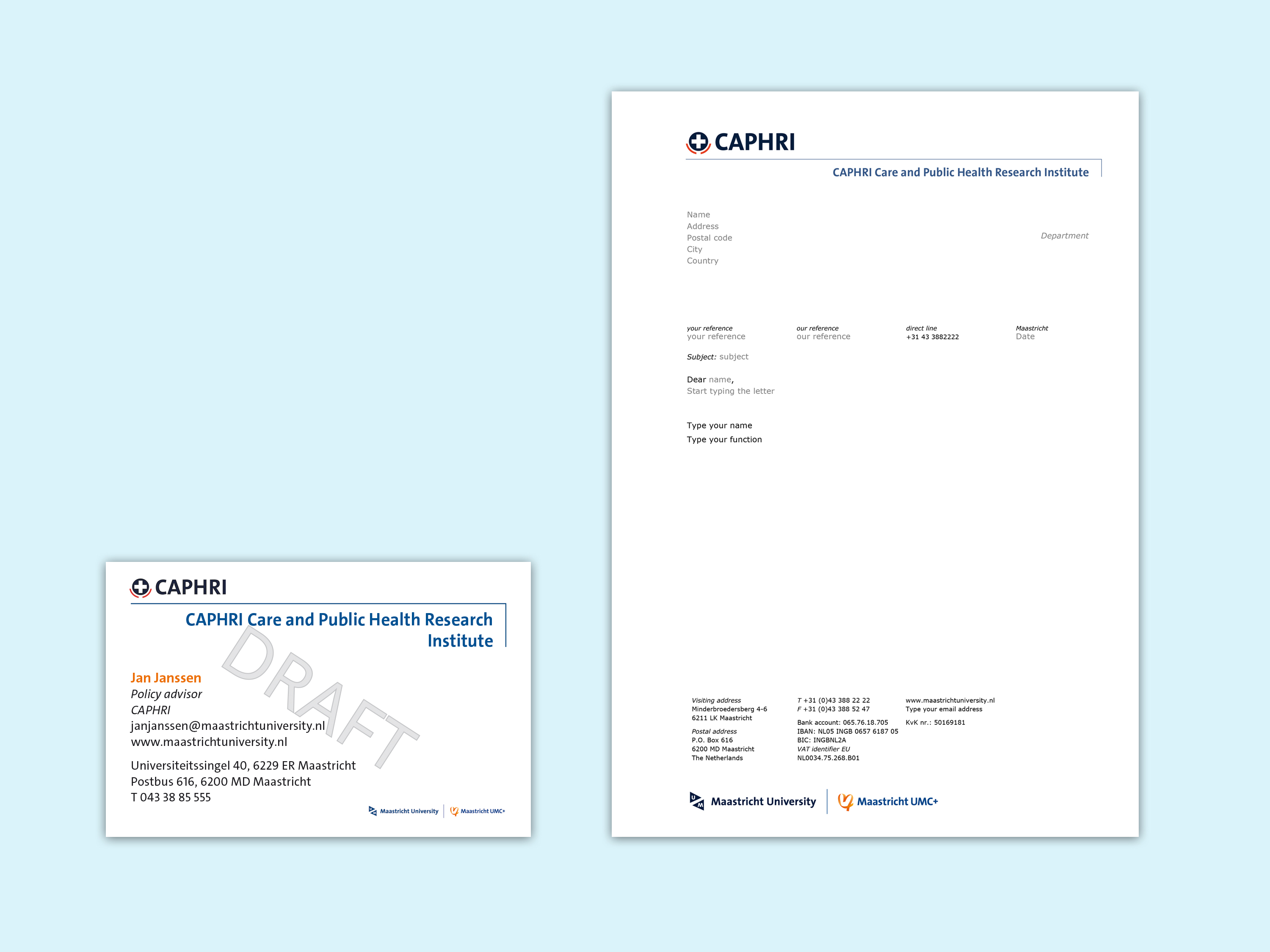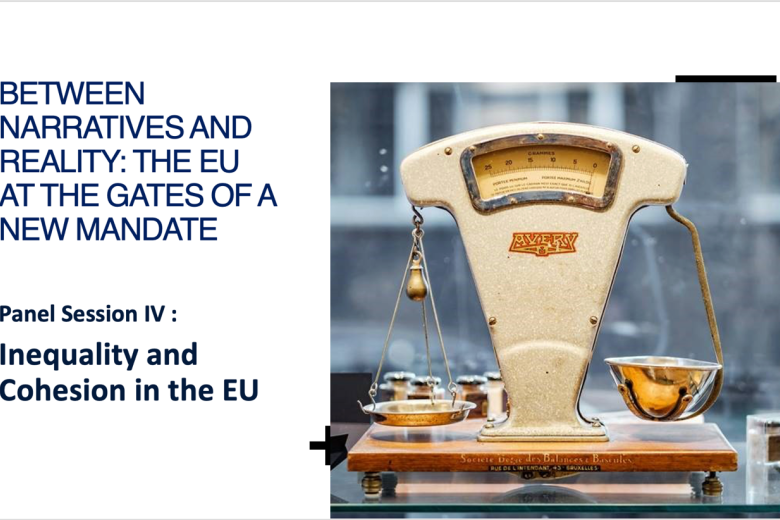
Various Thesis typefaces are available; UM uses (sans-serif) Thesis Sans, which comes in many fonts (bold, regular, light, etc.). Thesis Sans is the standard typeface used in UM’s basic house style elements, such as the logo, endorsed A-brands and UM unit names . We recommend using Thesis Sans as often as possible; along with the logo and colours, typography reflects the same standards of consistency for all university units.

Professional users – including our preferred suppliers, such as (DTP) designers with graphic design programs – use a open type (CFF) version of Thesis Sans. UM’s corresponding licence covers the following Thesis Sans font styles.
- Thesis Sans Bold
- Thesis Sans Semi Bold
- Thesis Sans Regular
- Thesis Sans Semi Light
- Thesis Sans Expert
- Thesis Sans Bold Italic
- Thesis Sans Semi Bold Italic
- Thesis Sans Regular Italic
- Thesis Sans Semi Light Italic
It is recommended to always balance the weight of different fonts used (for example to combine Thesis Sans Bold with Thesis Sans Regular or Thesis Sans Semi Bold with Thesis Sans Semi Light). For design and layout, please contact our preferred suppliers. For the website only the font weights Semi Light, Plain, Bold and tabular lining figures should be used.
Use the Truetype typeface ‘Verdana’ for stationery, reports and other digital communication media. The typeface "Calibri" is used for Power Point presentations. Verdana and Calibri are standard Microsoft Windows inclusion available on all PCs.

